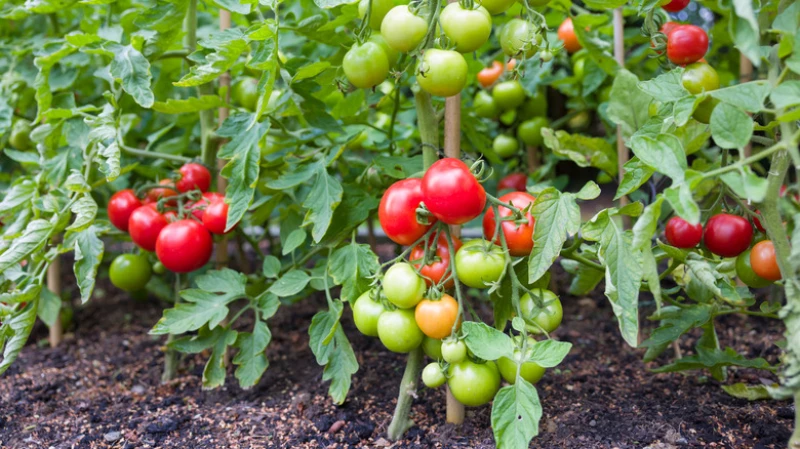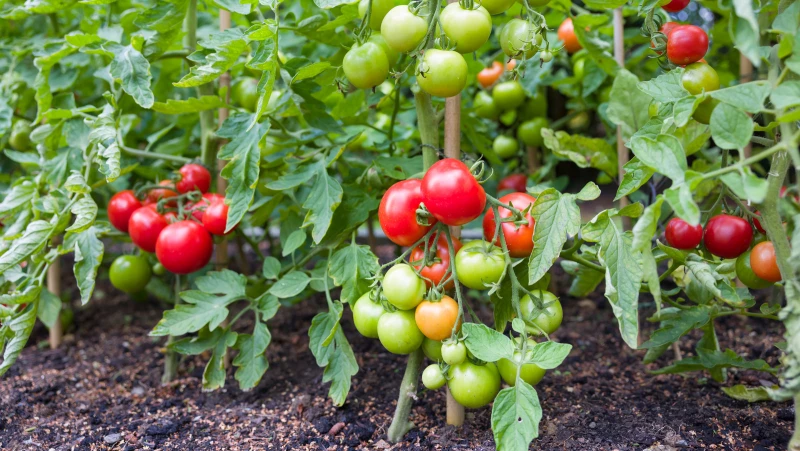Tomatoes are essential ingredients in many dishes. Without tomatoes, bruschetta would be dry toast, salsa would be a pile of onions and peppers, and tomato soup would be ... well ... hot water. Let's face it, in some dishes, there really is no substitute for tomatoes. If you're planning to showcase your garden tomatoes in your summer recipes, you're not alone. It seems tomatoes are headliners in many home gardens. According to The National Gardening Association, tomatoes are the most popular homegrown crop in the United States. While they are one of the easiest foods to grow in your garden, tomatoes are also susceptible to numerous diseases, including white mold — a potentially devastating disease that could derail your upcoming culinary compositions.
Understanding White Mold in Tomato Plants

White mold, also known as timber rot or stem rot, is a fungal infection caused by Sclerotinia sclerotiorum. This type of infection is quite common in tomato crops and various other vegetables. Dealing with white mold can be challenging as it tends to persist in the soil, potentially resurfacing year after year. The infection is most prevalent during periods of cool, moist weather, particularly when these conditions align with the flowering stage.
To effectively manage white mold and prevent recurring infections, it is crucial to be able to identify the signs of an infestation. One of the key characteristics of white mold infections is the presence of tiny black sclerotia in the soil's upper layers. When the weather conditions are conducive, these sclerotia germinate and give rise to small brown mushrooms that release spores into the air. These spores can travel long distances, carried by the wind, before landing on the foliage of susceptible plants. In tomatoes, the spores commonly infect the stem joints near recently fallen flowers.
Dealing with White Mold in Tomato Plants
Sometimes, white mold infections can be mistaken for root rot or wilt disease, as they all lead to browning of tomato plant leaves. To identify white mold, inspect the stems for brown water-soaked lesions near the base, which develop in the early stages. As the disease progresses, white, cottony fungus patches appear at the infected areas, often containing tiny black sclerotia. The stems may also show signs of bleaching, dryness, and brittleness. If the main stem is infected, the entire plant may collapse. White mold can also affect tomato fruit, causing it to turn gray and rot quickly. Once plants are infected, they should be removed immediately to prevent further spread. It's important not to compost infected plants, as the sclerotia can remain dormant in the soil and cause future infections.
Unfortunately, there is no treatment for white mold once it infects a tomato plant. Remove infected plants carefully to prevent spreading the disease and continue monitoring remaining plants for any signs of white mold.
When it comes to dealing with white mold in plants, fungicides may not be the solution for infected plants, but they can be used preventatively in future seasons. A recent study published in the Journal of AgriSearch suggests that Mancozeb could help limit white mold in certain plants. However, the most effective way to control white mold outbreaks is through physical measures. One key strategy is to ensure proper spacing between tomato plants to allow for good air circulation, which helps the plants dry out quickly after watering or rain. Using drip irrigation systems or soaker hoses instead of sprinklers can also help reduce moisture levels. Additionally, growing tomatoes in raised beds can aid in quicker soil drying. Regularly inspecting your garden, especially during flowering, for any signs of white mold is crucial. By staying vigilant and implementing these tips, you can enjoy delicious BLTs this summer with more than just bacon and lettuce.








